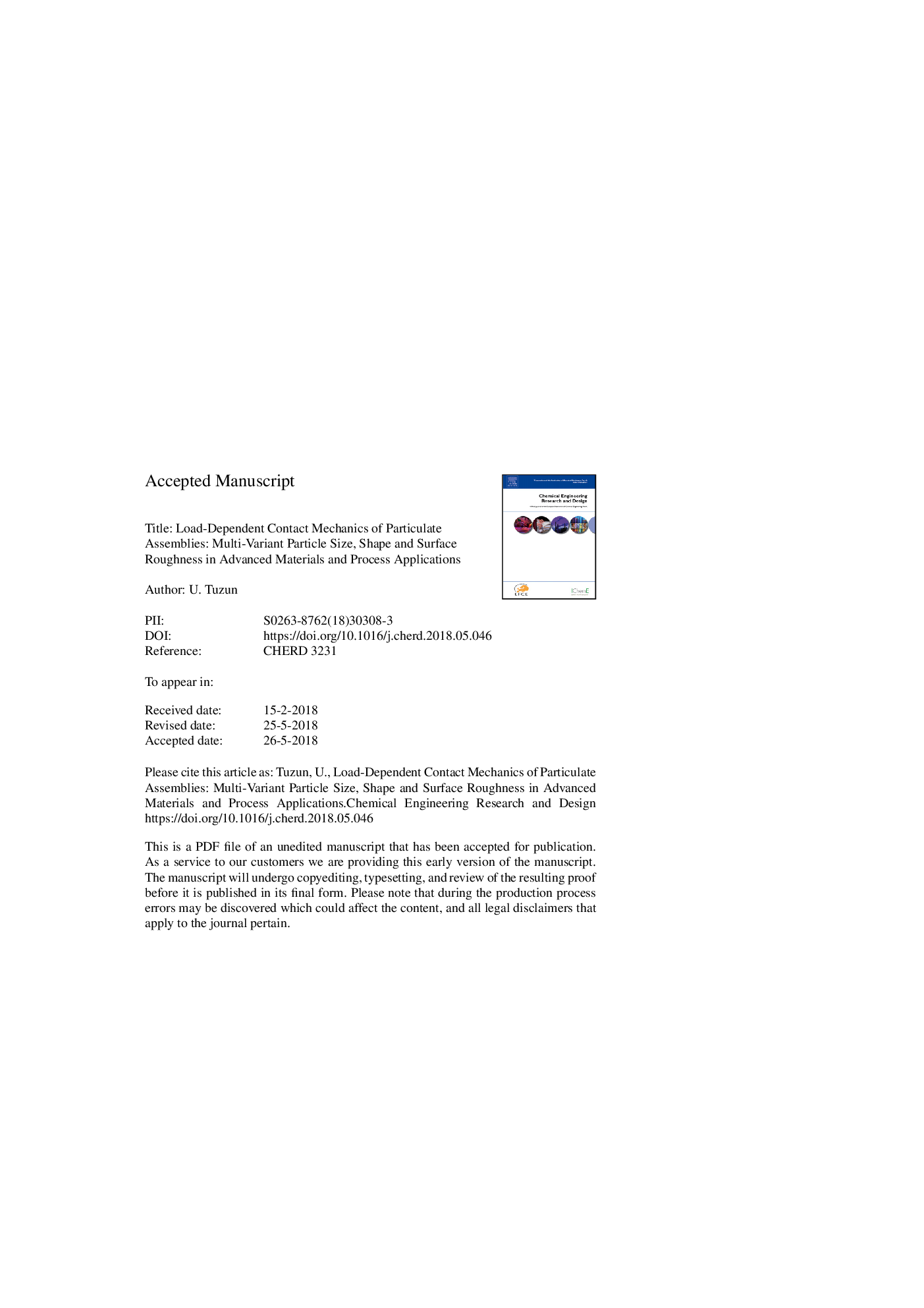| کد مقاله | کد نشریه | سال انتشار | مقاله انگلیسی | نسخه تمام متن |
|---|---|---|---|---|
| 7005534 | 1455132 | 2018 | 22 صفحه PDF | دانلود رایگان |
عنوان انگلیسی مقاله ISI
Load-dependent contact mechanics of particulate assemblies: Multi-variant particle size, shape and surface roughness in advanced materials and process applications
ترجمه فارسی عنوان
مکانیک تماس وابسته به بار وابستگی ذرات: اندازه ذرات، شکل و زبری سطح چند متغیر در مواد پیشرفته و کاربردهای فرآیند
دانلود مقاله + سفارش ترجمه
دانلود مقاله ISI انگلیسی
رایگان برای ایرانیان
کلمات کلیدی
جریان گرانول، کامپوزیت مدل سازی مواد شیمیایی قطعه،
موضوعات مرتبط
مهندسی و علوم پایه
مهندسی شیمی
تصفیه و جداسازی
چکیده انگلیسی
Many of the industrial manufacturing processes of particulate materials are presently modeled using Discrete Element Models (DEM), and in some instances hybrid multi-phase models combining DEM with CFD and other hydrodynamic variants, see Chareyre (2018) and Mehta (2007). The early tribology work in 80s and 90s on load-dependent particle contact mechanics for use in computational algorithms relied on considerations of single-point contacts between smooth elastic and rigid-plastic spheres and curvilinear surface contacts between cylindrical shapes; see Johnson (1985). Later developments included multiple-asperity surface contacts and elastic/plastic surface interactions as well as contact angle variations; see Tuzun and Walton (1992), Tuzun et al. (2004) and Smith and Tuzun (2002a) that include many other references. In this paper, the established theoretical framework is reviewed first for calculating bulk assembly stresses and bulk shear patterns from single-particle contact mechanics highlighting the importance of the particle shape, size and surface roughness. Subsequently, illustrations are provided of the effects of relaxing the assumptions of mono-disperse particle size and shape on the bulk shear patterns observed during slow-shearing, packed assembly flows as seen in chutes and hoppers and in particle heaps respectively. Finally, an analogy is provided between the studies of the deformation response of material composites comprising of particles embedded within a matrix structure to sustained stress-loading and unloading cycles; see Hull and Clyne (2017) and those observed in flowing particle assemblies under compression and shear. Such an analogy can be particularly useful in predicting the flow behaviour of particles “tailor-made” for advanced functionality commonly encountered in applications as widely ranging as multi-phase catalytic reactors and separators, drug manufacture, renewable energy production and storage and in chemical and physical abatement of harmful environmental emissions.
ناشر
Database: Elsevier - ScienceDirect (ساینس دایرکت)
Journal: Chemical Engineering Research and Design - Volume 137, September 2018, Pages 101-112
Journal: Chemical Engineering Research and Design - Volume 137, September 2018, Pages 101-112
نویسندگان
U. Tuzun,
